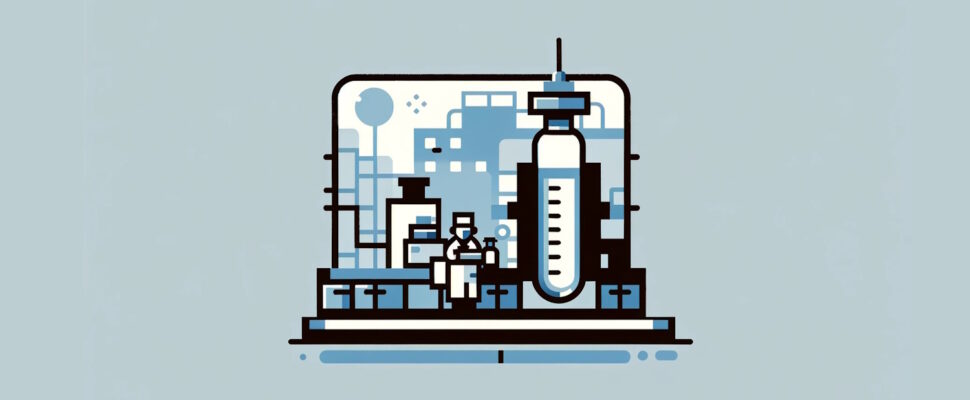Medicines for Africa’s Lenias Hwenda reflects on Moderna’s recent decision not to go ahead with plans for a vaccine manufacturing facility in Kenya, and why local production remains crucial to building Africa’s healthcare autonomy.
In a turn of events that is both disappointing yet somehow not surprising, Moderna recently announced its decision to halt its plans to build a USD 200 million vaccine manufacturing facility in Kenya. This development comes after initial high hopes after Moderna’s announcement in March 2022 that promised a substantial boost to vaccine production in Africa. The company would play a critical role in addressing medical needs during the pandemic and beyond.
Whilst it may be logical from a business perspective, Moderna’s decision to withdraw from the Kenyan market is a big disappointment for Africa’s wider goals. It underlines a stark reality, that Moderna, currently does not have other approved products in the market and finds retreating from this ambitious project amidst plummeting COVID-19 vaccine demand and consequent financial losses reported to amount to USUSD 1 billion the most prudent action. However, the move can be criticized for being potentially damaging to Moderna’s image. In particular because as Moderna cancels the deal, in the same breath, it also reiterates its commitment to global health equity. This decision however perpetuates the cycle of historical inequity in product access by Africa. Such inequity will persist as long as global corporations like Moderna are unwilling to take the risk of investing in expansion of their manufacturing to Africa. The African market will continue to be underserved and have limited-to-no access to vaccines and other medical products in times of acute need.
A sustained commitment to developing manufacturing vaccines in Africa would have significantly boosted Moderna’s standing and credibility towards its professed commitment to promoting equitable access. It is not clear whether cancellation was the only viable option for Moderna and whether other options such as Moderna repurposing the facility to focus on producing other vaccines such as for Flu and RSV or other diseases prevalent in Africa like malaria and HIV were ruled out. Moderna does not yet have licensed vaccines for malaria and HIV, but it does have candidates in the pipeline. The mRNA technology platform has shown itself to be highly versatile even though it may not be a suitable solution for every pathogen. Nevertheless, should these pipeline vaccines or other mRNA therapeutics receive regulatory approval in the future, this factory could have helped Moderna manufacture such products in Africa.
Nevertheless, one cannot ignore the economic realities on the ground. Even if the vaccines were manufactured locally, it is possible that local health budgets may not have been able to afford Moderna’s vaccines given that amongst all the COVID-19 vaccines, Moderna’s was the most expensive. For instance, Moderna offered its vaccine to South Africa at USD 30-42 per dose and USD 29 per dose for Botswana. According to reports, both countries were paying significantly more than what the US and the European Union for Moderna’s vaccine showing that claims that products are not available to Africa because it cannot pay are not always correct. Nevertheless, it could be foreseen that the proper application of differential pricing could have addressed the cost challenge. Furthermore, organizations like GAVI could have been approached to use their considerable purchasing power to support the purchase of Moderna vaccines produced in Africa since they have indicated they plan to support manufacturing in Africa.
Realities of the African Market and Emerging Trends
It is important to note however that Moderna’s decision aligns with the purely business and economic global business strategies recently taken by other big pharma giants like GSK, Sanofi and Bayer. Truth be told, the African market can be a challenging environment. It is overwhelmed with counterfeited substandard medicines which create unfair competition and take market share from all legitimate manufacturing operations established on the African continent. This and many other challenges make the market less attractive for companies seeking short-term gains. Furthermore, the challenges that the Aspen-Johnson and Johnson deal faced did not set a good precedent for projects like Moderna’s and certainly did nothing to reassure investors. Aspen entered an agreement with Johnson & Johnson to package, price, sell and distribute its vaccine in Africa, rebranded as Aspenovax.
Many saw this deal as a great solution towards reducing Africa’s reliance on imported vaccines which were costly and not available during the COVID-19 pandemic. Aspen began manufacturing the vaccines but quickly encountered the hurdle of not receiving any orders for Aspenovax. There were many extenuating factors of course. For instance, international mechanisms like the WHO and GAVI did not plan to buy vaccines from Aspen highlighting a major challenge for domestic African companies. Up to that point, Africa had struggled to find vaccine stocks available for purchase, and African countries were making alternative arrangements to mitigate their inability to buy vaccines through bilateral relationships. Meanwhile western countries that had overpurchased vaccines were facing the expiry of large excess stocks of COVID-19 vaccines and were dumping them into African countries as donations, oftentimes with very little shelf life left. Furthermore, disinformation was rampant and African populations were reluctant to accept vaccines that they had seen being withheld from them and were questioning why these vaccines were being given to them now. Africans wondered whether they were being given the vaccine only now because something was wrong with the vaccines. Their skepticism was of course understandable.
Nevertheless, Aspen needed to find a solution. It contemplated closing the 450 million dose production line or using it to produce anaesthetic and other products instead. Fortunately, Aspen was eventually able to enter an agreement with the Serum Institute of India to manufacture and sell the Indian company’s four branded vaccines in Africa that were part of routine immunisation. Partnership with Serum Institute helped Aspen to avoid the challenges with the J&J partnership in part because the Serum Institute already had a significant share of the African market for those specific vaccines in particular through international organizations like UNICEF and GAVI. This could be leveraged for Aspen’s market access. Furthermore, under the Serum agreement, Aspen would be producing hexavalent, pneumococcal, polyvalent meningococcal and rotavirus shots – which are already commonly administered in Africa and are therefore well accepted with established demand. Aspen’s proactive approach enabled it to solve its lack of access to market and saved its USD 200 million investment into a vaccine production line saving it from premature closure. It could now be repurposed towards routine immunization vaccines of Serum Institute.
Access to Market: The Perennial Challenge
Lack of access to market is one of the biggest confounding factors for domestic medicines and vaccine manufacturing in Africa. Domestic manufacturers have been effectively locked out of access to the African market for a number of reasons. First, few African governments have control of their domestic vaccine market. The majority of the African market is controlled by international organizations like UNICEF and GAVI, with others like the Global Fund controlling the markets for medical commodities. African governments have very little say about where the products bought for their populations are sourced. As in the case of Aspen, these organizations are often unwilling to buy from domestic African manufacturers. The cost of African countries accessing medical commodities through heavily subsidized international mechanisms is that they have ceded control leaving their own domestic manufacturing companies locked out of the lucrative international markets. They have sacrificed industrial development to get cheap medicines. Without access to the African market directly through government purchasing or indirectly through international mechanisms, establishing successful vaccine manufacturing businesses in Africa is akin to pushing a boulder up a mountain. Sacrificing industrial development for cheap medical commodities is a steep price to pay for African economies.
Moderna’s exit highlights the need to re-calibrate the market to level the playing field for domestic manufacturing and spotlights the need for policy reform to enable industrial development. Otherwise, domestic manufacturers struggle to attract and retain investment without an assured market. Moderna’s withdrawal whilst a big disappointment for Africa, it still underscores a critical need for investment in medical product manufacturing infrastructure and a need to transform the manufacturing ecosystem to make projects and investments like Moderna’s viable. Governments must do more to bring about the transformation needed to improve the ease of doing business in the African markets and to create conditions that reassure investors that manufacturing businesses can succeed on the African continent. This will help to ensure that Africa is better prepared for future health emergencies, with better security of access through reduced dependency on importation for nearly all of its vaccine needs. Going forward, the focus should remain steadfast on empowering local production, with or without Moderna’s direct involvement. The path to healthcare autonomy in Africa is long and fraught with challenges, but it remains vital to the continent’s future resilience, health and economic security.



